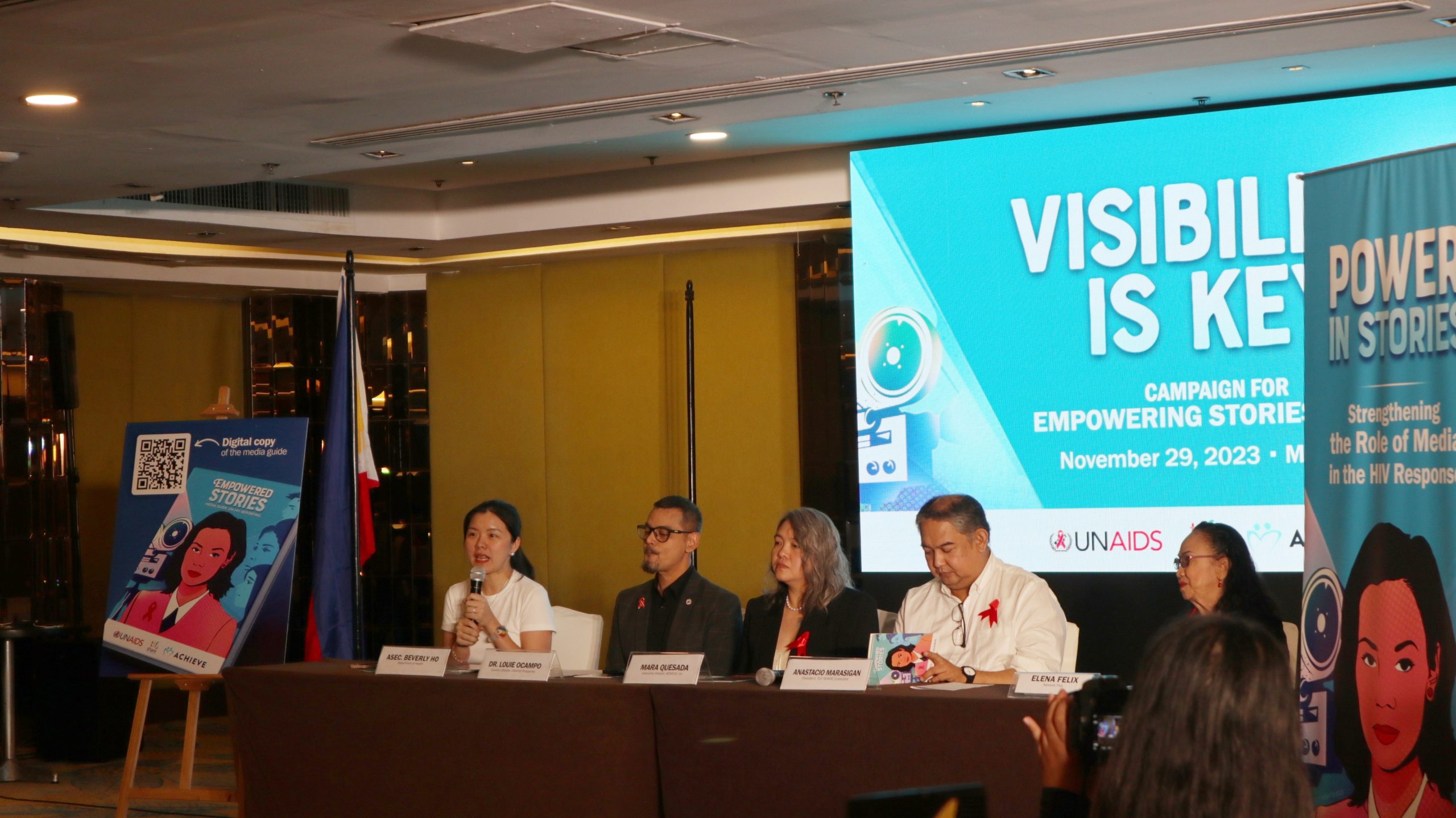
Department of Health Assistant Secretary Dr. Beverly Ho (left) joins representatives from HIV advocacy groups UNAIDS Philippines, Achieve Inc., Network Plus, and TLF Share Collective, Inc. in the launch of the “Media Guide on HIV Reporting” booklet and the “Visibility is Key” campaign at Bayleaf Hotel, Manila, on Nov. 29. JUSTINE BAUTISTA
Advocacy groups and the Department of Health (DOH) on Wednesday, Nov. 29, released a media guide to help Filipino journalists and news outlets to shift from sensationalized to a more “truthful, empowering, and human-rights based” approach in reporting about the human immunodeficiency virus (HIV).
The book, titled, “Empowered Stories: Media Guide on HIV Reporting,” published by UNAIDS Philippines, TLF Share Collective, Inc., and Action for Health Initiatives, Inc. (Achieve), contains updated information about HIV in the Philippines and reporting guides.
“Media practitioners still play a primary role in shaping how not just young people… you also shape how the opinion leaders, influencers think and say things,” said Dr Beverly Ho, assistant secretary at the DOH.
The book calls for terms such as “HIV carrier,” “HIV victim,” and “HIV-infected person” to be replaced by “PLHIV” or “People Living with HIV.”
It also debunked misconceptions about HIV and AIDS and provides guides on how to curate a more sensitive story about the issue.
“These are based on respectful and communicative interactions, known as non-discriminatory terms, emphasizing empowerment rather than stigmatizing,” Anastacio Marasigan, president of TLF Share Collective. said.
Based on DOH data, the Philippines has the fastest-growing HIV epidemic in Asia and the Pacific, with a 418% jump in new infections between 2010 and 2022 and a 518% change in AIDS-related deaths between the same period.
“You can still have catchy headlines without using stigmatizing language and hopefully this media guide will help you to do that… and one thing I would like to request media to write about [is the] successful intervention[s] done by communities themselves,” said Michelle Quesada, director of Achieve.
“I think the frequency by which we see stories related to HIV in the media will help decision-makers to see the urgency… If we keep bombarding different types of media with articles, stories, and features about HIV, then more and more people will get engaged.” she added. Justine Bautista, Roselyn Dapiton